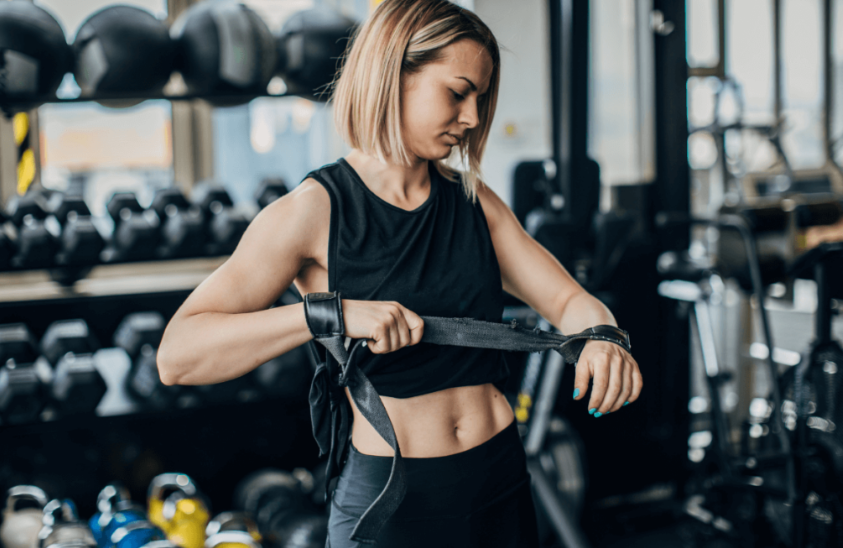
Weightlifting Straps: When and How to Use Them Properly
Weightlifting straps are essential accessories in the realm of strength training. They are typically constructed from sturdy materials such as cotton, nylon, or leather, designed to wrap around your wrists and the barbell or dumbbell you’re lifting. Using weightlifting straps can significantly enhance your lifting performance by shifting the focus from your grip strength to the muscles you’re targeting. This can be particularly beneficial during exercises like deadlifts, rows, or pull-ups, where grip fatigue often limits your capacity to lift heavier loads.
When to Use Weightlifting Straps
Deciding when to integrate weightlifting straps into your routine depends largely on your training goals and the exercises you perform. They are most beneficial in scenarios where grip strength is the limiting factor, rather than the strength of the target muscle group. For instance, if you’re struggling to maintain your grip during heavy deadlifts, using straps can help you focus more on lifting technique and muscle engagement.
Another ideal situation for using weightlifting straps is during high-rep sets or when fatigue sets in. As your muscles tire, your grip may give out before your target muscles do. In such cases, straps can enable you to continue your workout without compromising form or reducing weight, especially when combined with Tribe Lifting wrist wraps for weightlifting, thereby maximizing muscle growth and endurance.
However, it’s important to use straps judiciously. Over-reliance on them can hinder the development of grip strength, which is crucial for overall lifting performance. To strike a balance, consider using straps only when necessary, such as for your heaviest sets or when fatigue becomes a limiting factor.
How to Properly Use Weightlifting Straps
Mastering the use of weightlifting straps involves a few simple steps, ensuring they provide the support you need without compromising safety. Begin by threading the strap through the loop, forming a secure connection around your wrist. The free end of the strap should hang towards your palm, ready to wrap around the bar.
Once your wrist is secure, position the strap around the barbell or dumbbell. Wrap the strap tightly around the bar, ensuring it lies flat without twists or kinks. This snug fit will help prevent the bar from slipping during your lift and provide maximum grip support.
As you lift, focus on maintaining a firm grip on the strap-wrapped bar. While the strap provides added support, your grip should still actively engage the bar to ensure stability and control. Practicing this technique will help you use weightlifting straps effectively, enhancing your training while minimizing the risk of injury.
Choosing the Right Weightlifting Straps
Selecting the proper weightlifting straps is vital for ensuring comfort, durability, and performance. Consider the material first; cotton straps offer a soft feel and are generally more comfortable, while nylon straps provide greater durability and resistance to wear and tear. Leather, although less common, is another option that offers robust support but may require a break-in period for optimal comfort.
Next, assess the length and width of the straps. Longer straps offer more wrapping options and are ideal for larger bars or those with a thicker grip. Conversely, shorter straps may be more suitable for smaller hands or those who prefer a quicker setup. The width of the strap can also impact comfort and grip security, with wider straps offering more surface area for support.
Finally, consider additional features such as padding or neoprene lining, which can enhance comfort by reducing wrist strain during heavy lifts. By evaluating these factors, you can choose the weightlifting straps that best meet your personal preferences and training needs.
See also: Luxury Car Rental Dubai: Your Ultimate Guide to a First-Class Experience
Common Mistakes to Avoid with Weightlifting Straps
Using weightlifting straps incorrectly can lead to diminished effectiveness and increased risk of injury. One common mistake is over-relying on straps for all lifts, which can hinder the development of grip strength. It’s important to incorporate strap-free sets into your routine to ensure your grip strength progresses alongside other muscle groups.
Another frequent error is improper wrapping technique. Ensure that the strap is tightly secured around both your wrist and the bar, without any twists or slack that could compromise your grip. An incorrect setup can lead to slipping or instability during lifts, increasing the risk of accidents.
Finally, neglecting to maintain your straps can result in premature wear and tear, reducing their longevity and effectiveness. Regularly inspect your straps for signs of damage, such as fraying or weakened material, and replace them as necessary to ensure consistent support and safety during your workouts.
Alternative Grip Techniques to Consider
While weightlifting straps are a valuable tool, exploring alternative grip techniques can enhance your lifting experience and grip strength. One such method is the hook grip, which involves wrapping your thumb around the bar and securing it under your fingers. This grip provides a secure hold, especially for heavy lifts like the deadlift, and can be a strong alternative to using straps. Research shows that hook grip significantly activates forearm muscles and improves grip strength.
Another option is the mixed grip, where one hand grips the bar overhand, and the other underhand. This technique prevents the bar from rolling out of your hands, offering a firm grip during heavy lifts. However, it’s important to alternate hand positions regularly to avoid muscular imbalances.
Lastly, incorporating grip strength exercises into your routine can enhance your natural grip capacity. Exercises such as farmer’s walks, plate pinches, or static holds can strengthen your hands and forearms, reducing the need for straps over time and improving your overall lifting performance.
Weightlifting Straps vs. Other Lifting Aids
Weightlifting straps are just one of several lifting aids available to enhance your training. Understanding the differences between straps and other aids, such as lifting hooks or gloves, can help you choose the best tool for your needs.
Lifting hooks, for instance, provide a metal hook that attaches to the bar, offering significant grip assistance without engaging your hand muscles as much as straps. While hooks are useful for those with grip limitations, they can limit the development of grip strength over time.
Lifting gloves, on the other hand, offer protection and comfort but may not provide the same grip security as straps or hooks. Gloves are ideal for reducing calluses and providing a more comfortable grip during lighter lifts or high-rep sets.
Maintenance and Care for Your Weightlifting Straps
Proper maintenance of your weightlifting straps is essential to ensure their longevity and effectiveness. Regularly inspect your straps for signs of wear, such as fraying or weakening, and replace them as needed to maintain optimal performance and safety.
Cleaning your straps is also crucial, especially if they are made of materials that absorb sweat, like cotton. Hand wash your straps with mild detergent and air dry them thoroughly to prevent mold or mildew buildup. Avoid using harsh chemicals or machine washing, which can degrade the material over time.
Storing your straps properly can also extend their lifespan. Keep them in a dry, cool place away from direct sunlight, which can weaken the fibers. By following these maintenance and care tips, you can ensure your weightlifting straps remain a reliable part of your training toolkit.
Summary
Incorporating weightlifting straps into your routine can significantly enhance your lifting capabilities by providing the necessary support to handle heavier weights and focus on muscle growth. Remember, weightlifting straps should complement your training, not replace the development of grip strength. By balancing strap use with alternative grip techniques and strength-building exercises, you can achieve well-rounded improvements in your lifting performance.

